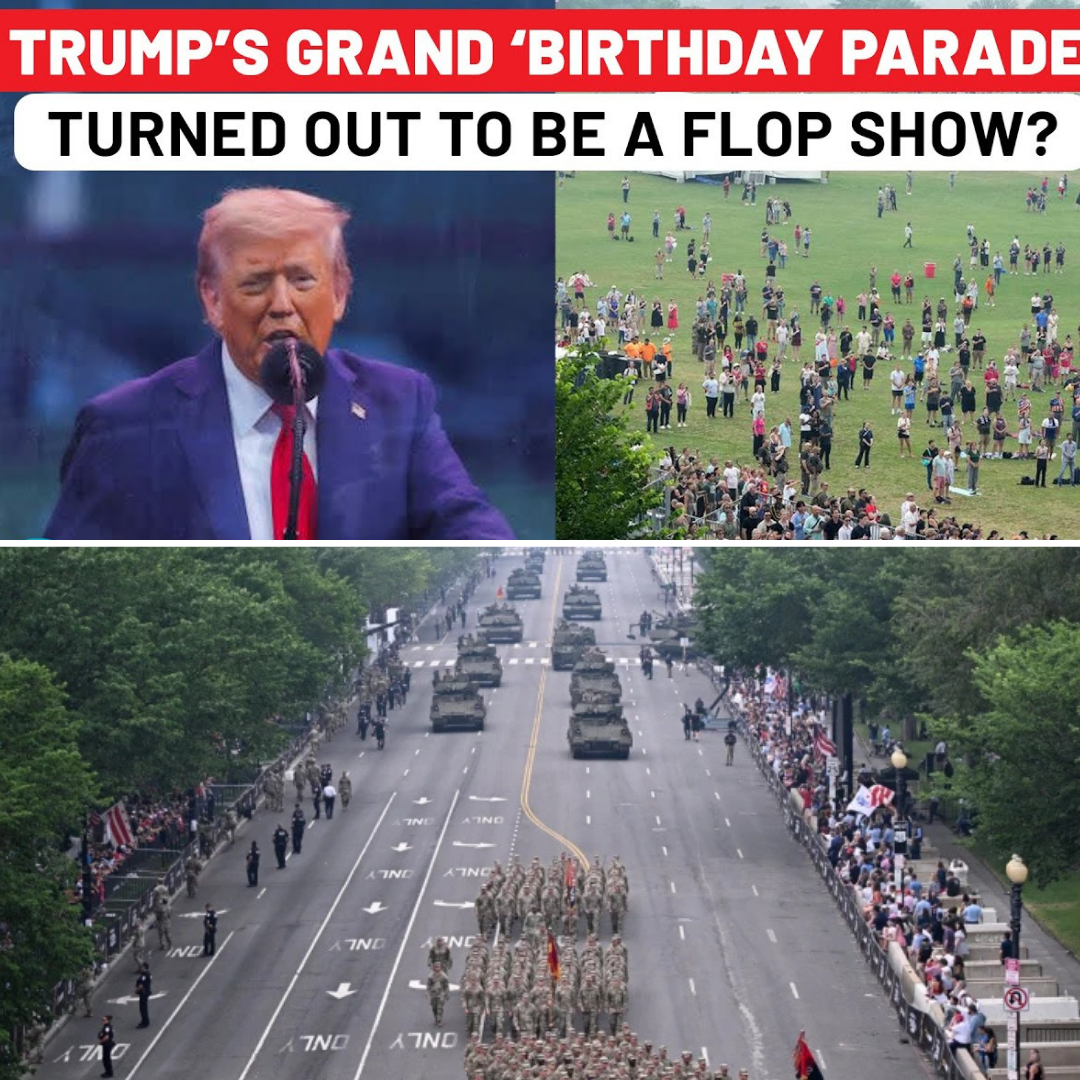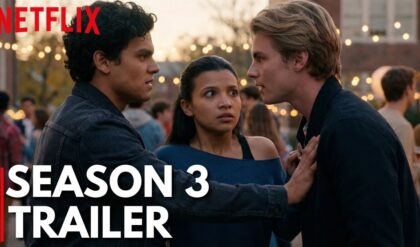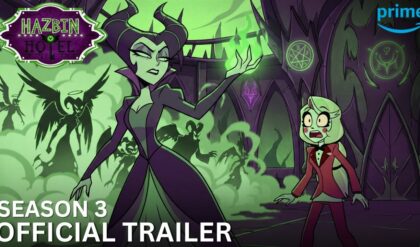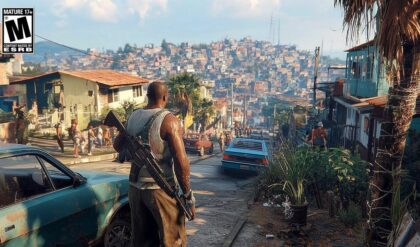TRUMP’S $75M BIRTHDAY PARADE FLOPS? 😳
Rubio yawns, Vance bails early, and empty seats steal the show!
Was this the biggest letdown of the year?
Click to see what went wrong! 👉

On June 14, 2025, Washington, D.C., hosted a grand military parade to mark the U.S. Army’s 250th anniversary, coinciding with President Donald Trump’s 79th birthday. Billed as a patriotic spectacle, the event featured tanks, troops, helicopters, and a fireworks finale, but it drew scrutiny for its reported $75 million cost, low attendance, and moments of apparent disinterest, with Secretary of State Marco Rubio caught yawning and Vice President JD Vance leaving early. Social media and reports amplified claims that the parade “bombed,” citing empty bleachers and a lackluster vibe. Yet, the narrative of failure may be overstated, shaped by political tensions and competing “No Kings” protests nationwide. This article investigates the parade’s outcome, its context within a tumultuous week, and the interplay of media and public perception in labeling it a flop.
The Parade: A Long-Held Vision
Trump’s desire for a military parade dates to 2017, inspired by France’s Bastille Day event, which he attended as president. Initially proposed for 2018, the idea was shelved due to high costs and logistical concerns, including potential damage to D.C. streets from tanks. The June 2025 parade, officially honoring the Army’s founding on June 14, 1775, doubled as a celebration of Trump’s 79th birthday, a coincidence he publicly downplayed but which shaped perceptions. Reports estimate the cost at $25–$45 million, including street repairs and troop transport, far below the $75 million figure cited in some claims, which lacks substantiation. Corporate sponsors like Lockheed Martin, Coinbase, and Oracle offset some expenses, though their involvement raised questions about commercializing a public event.
The parade featured 6,000 troops in historical uniforms, from Revolutionary War to Vietnam, alongside M1 Abrams tanks, Chinook helicopters, and robotic dogs. A reenlistment ceremony for 250 soldiers, led by Trump, and a fireworks display over the National Mall capped the three-hour event. Trump spoke briefly, hailing the Army as the “fiercest and bravest fighting force” and urging America to “celebrate victories” like other nations. Despite logistical hurdles, including a 30-minute early start due to rain and canceled flyovers, the parade proceeded, drawing a crowd along Constitution Avenue and the National Mall. However, attendance fell short of expectations, with estimates of 5,000–10,000 against projections of 20,000–200,000, prompting the “bombed” label. web:2,4,8 post:5
The Moments That Defined the Narrative
Social media seized on moments that painted the parade as lackluster. Rubio, seated in the VIP stand, was filmed yawning, his arm draped over his chair, appearing disengaged. First Lady Melania Trump, in a cream pinstripe suit, was caught with her eyes closed, seemingly dozing, during the procession. These images, shared widely on X, fueled mockery, with users suggesting even Trump’s allies were bored. One post claimed Trump looked “miserable,” though photos show him saluting troops and clapping, suggesting engagement at key moments. The “Rubio yawns” narrative, while vivid, overlooks the parade’s three-hour duration and overcast weather, which may have contributed to fatigue among attendees and officials.
Vance’s early departure added to the flop narrative, but context clarifies it was not a snub. Speaking briefly to mark the Army’s birthday and his 11th wedding anniversary, Vance introduced Trump, wished him a happy birthday, and left with his wife, Usha, and their children for personal celebrations. His speech emphasized support for soldiers, promising “weapons and support to kick the hell out of the enemy.” Reports confirm his exit was planned, not abrupt, and his presence with cabinet members like Defense Secretary Pete Hegseth and UFC CEO Dana White underscored administration support. The “Vance leaves early” claim, while factually true, exaggerates its significance, framing a personal choice as disloyalty without evidence. web:1,14,19 post:1
Low Attendance: Weather, Protests, or Apathy?
The parade’s sparse crowd, with empty bleachers visible on C-SPAN, was a focal point of criticism. Army officials projected 20,000 attendees, while some estimates reached 200,000, but actual turnout was closer to 5,000–10,000, per reports and X posts. A White House claim of “250,000 patriots” was widely ridiculed, as aerial shots showed thin crowds under light rain. Weather played a role, with forecasts prompting the early start and canceling flyovers, but it didn’t fully deter attendees, as some, like North Carolina nurse Crystal Sykes, braved the drizzle in MAGA hats. Others, like Maryland student Joey Ink, attended to honor veterans, despite cost concerns.
Competing “No Kings” protests, sparked by Trump’s immigration policies and National Guard deployment in Los Angeles, drew larger crowds nationwide, with 2,000 demonstrations reported. In D.C., a “Refuse Fascism” protest near Lafayette Square avoided clashing with the parade, respecting military reverence, but protests elsewhere, like a tense standoff in Los Angeles, overshadowed the event. A hotel manager’s experiment, finding low D.C. hotel bookings for June 14, suggested limited travel for the parade, supporting claims of apathy. However, the “bombed” label ignores attendees who found value, like families posing with military gear or cheering paratroopers, indicating a mixed reception rather than total failure. web:3,11,13 post:3,7
Republican No-Show: A Political Snub?
The parade’s political backdrop added fuel to the flop narrative. A survey of 50 GOP lawmakers found only seven planned to attend, including MAGA stalwarts like Marjorie Taylor Greene and Elise Stefanik, while key figures like Senate Majority Leader John Thune, House Majority Leader Steve Scalise, and Senator Lindsey Graham skipped it. Some, like Kentucky Senator Rand Paul, criticized the parade’s “goose-stepping” aesthetic, while others, like House Armed Services Chair Mike Rogers, prioritized a Paris airshow. The low GOP turnout, reported widely, suggested a snub, reflecting tensions over Trump’s military displays amid domestic unrest, including the Minnesota lawmaker killings and Middle East strikes.
However, the absence of many Republicans may reflect scheduling conflicts or strategic distancing, not outright rejection. Attendees like Representatives Byron Donalds and Cory Mills, and cabinet members like Hegseth and Linda McMahon, showed administration support. Trump’s family presence, including Donald Jr., Eric, and Tiffany, countered claims of isolation, though Ivanka and Jared Kushner’s absence was noted. The “snub” narrative, while compelling, oversimplifies GOP dynamics, ignoring the parade’s Army focus and the polarized climate, where even supporters like Greene faced protest backlash. web:7,18,19 post:6
Media and Social Media: Shaping the “Bomb” Narrative
The “bombed” label was amplified by media and social media, which highlighted Rubio’s yawn, Vance’s exit, and empty seats. X posts mocked the turnout, with one user calling it a “waste of tax dollars” and another claiming Trump “looked like he would cry.” These sentiments, while reflecting public skepticism, relied on selective imagery, ignoring moments of engagement, like Trump’s reenlistment ceremony or crowd chants of “Happy Birthday.” Reports emphasized corporate sponsorships, like Coinbase’s crypto ads, and street damage costs ($3–$16 million), framing the parade as extravagant. A 64% public opposition to its taxpayer funding, per a poll, added weight to the criticism.
Yet, the narrative risks distortion. The parade, while falling short of Trump’s vision, was a logistical success, with 6,000 troops and a fireworks finale. Attendees like Sykes and Ink expressed pride, and military participants enjoyed the spotlight, per reports. The “No Kings” protests, while significant, were largely peaceful in D.C., and the parade avoided major disruptions. The “bombed” claim, driven by viral clips and partisan lenses, overlooks these nuances, echoing patterns where media sensationalism shapes perception, as seen in other high-profile stories. web:6,12,23 post:0,2
Broader Context: A Nation Divided
The parade unfolded during a tumultuous week, with Trump’s National Guard deployment in Los Angeles, missile strikes in the Middle East, and the Minnesota lawmaker killings dominating headlines. These events, coupled with “No Kings” protests, created a charged atmosphere, where the parade was seen as either patriotic or authoritarian. Critics on X linked it to Trump’s clemency for January 6 rioters, arguing it glorified military power for personal gain. Supporters, however, saw it as honoring veterans, with one attendee noting, “If we don’t support the military, who will join?”
The cost, while high, was partly offset by sponsors, and the $75 million figure appears inflated, with credible estimates at $25–$45 million. The low attendance, while undeniable, was influenced by weather and protests, not solely apathy. Rubio’s yawn and Vance’s exit, though meme-worthy, are anecdotal, not evidence of universal disinterest. The parade’s mixed reception—pride for some, outrage for others—reflects a divided nation, where narratives like “bombed” gain traction by amplifying selective truths. web:5,10,14 post:4
Conclusion
Donald Trump’s June 14, 2025, military parade, meant to celebrate the U.S. Army’s 250th anniversary and his 79th birthday, was neither the triumph he envisioned nor the total failure labeled by critics. Costing $25–$45 million, not $75 million, it drew 5,000–10,000 attendees, far below projections, amid rain and “No Kings” protests. Rubio’s yawn and Vance’s early departure, while notable, were magnified by social media and reports to craft a “bombed” narrative, overlooking moments of engagement and military pride. The low GOP turnout and corporate sponsorships fueled skepticism, but the parade’s logistical success and attendee enthusiasm suggest a more complex story. In a polarized era, marked by Minnesota’s tragedy and global tensions, the event underscores the power of selective narratives, urging a critical look beyond viral clips to understand its true impact.





